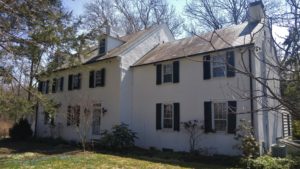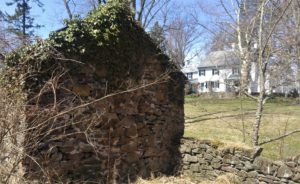She endured every deprivation possible to save her kids. In her deepest melancholy, Bucks County heroes came to her rescue.
The tale of Rachel begins in Cecil County, Maryland where a quarter of the population of 9,000 were slaves. She was one of them. At her owner’s death on a plantation in Elkton, he willed Rachel her freedom in 1831. Unfortunately, her six children remained in servitude, possibly to be sold off.

In desperation, Rachel gathered them up and made a run for it. They traveled at night through trackless wilderness in the direction of their only salvation – a network of Pennsylvania Quaker safe houses known as the Underground Railroad. Though Pennsylvania was a free state, superceding federal law made it illegal to shelter runaways. To do so risked fines equal to $50,000 today and imprisonment of 6 months.

For many fugitives, the goal was to reach Richard Moore’s home in Quakertown. A school teacher, he ran a pottery business and provided housing and employment or shuttled those on the run further north out of reach of slave catchers.

Rachel with her two youngest eventually found sanctuary on Jonathan and Mary Magill’s farm just off Aquetong Road outside New Hope. Mary was active in the Buckingham Female Anti-Slavery Society that led the drive to abolish slavery in Pennsylvania in 1779. The couple’s son Edward, 6, overhead Rachel’s woeful story on her arrival. As a Swarthmore College professor in 1898, he recalled it in an address to the Bucks County Historical Society.

“The general impression left on my mind by those in my early boyhood,” he began, “was the sad and helpless condition of the life of a slave; the inexpressible terrors which these affectionate creatures experienced from their fear of separation from their families, their bravery in setting out unaided and alone to seek a land of liberty while incurring the constant risk of recapture and being sold to a far off Southern market.”
In the beginning, Rachel and her family were in “a most pitiful condition” on reaching their first safe haven, the Phoenixville farm of Grace Lewis, 50 miles north of Elkton. Grace described the scene in a letter to Magill which he read to the historical society:
“Soon after she and her children left the home of the master, a rain came on, and the flapping of their wet garments against their unprotected limbs wore off the skin, until it bled with every step. Yet their sense of danger of capture was so great they pressed forward with all the speed possible to them. I think the mother carried the youngest child to hasten them forward. When they reached our home they were too sore to do anything but rest and recuperate. In addition to their need of rest was that of Northern clothing. My memory is the mother wore but a single garment, a coarse, heavy dress, woven in broken stripes of red, an inch or more in width. It was totally unlike anything of Northern manufacture, the children being dressed in the same material. Of course this clothing exposed them to detection by the first pro-slavery person they should meet. It had to be burned immediately. Our home was usually the first on the line where Southern clothing could be exchanged for Northern.”
Grace later smuggled the family by farm wagon at night to the Paxon residence near Norristown. “From there,” explained Magill, “they were forwarded to the home of W. H. Johnson, where homes were found for the four eldest children in the families of Thomas Paxon, Joseph Fell,
Edward Williams and John Blackfan. Rachel, with her two younger children, came to the home of my father where they remained for several years.”
The Magill property had a stone spring house with a false wall that fugitives could hide behind whenever authorities came snooping.

The ultimate fate of Rachel and her children is unknown. Possibly they continued north into the care of Richard Moore in Quakertown. His farmhouse was where the Chester and Bucks County lines of the Underground Railroad converged. Fugitives arrived “in very considerable numbers,” explained Magill. Out of fear, many chose to keep going through the Lehigh and Susquehanna valleys.
Long after the Civil War, Grace Lewis reached out to Magill after reading his memoirs in “The Friends Intelligencer”, a Quaker journal. She was overjoyed to learn Rachel found safety with his family. She also thanked Magill for writing about the anti-slavery movement. It gathered up “the ashes for history’s golden urn,” she concluded.
Today there’s a new deposit in that urn. On March 27, the Pennsylvania Historical and Museum Commission announced a roadside marker will be placed in front of the Richard Moore house in Quakertown. It will honor his heroic efforts to save more than 600 slaves during their epic escape to freedom.
Sources include Edward H. Magill’s lecture “When Men Were Sold, Reminiscences of the Underground Railroad in Bucks County and Its Managers” published in 1909;
the Historical Marker Program available online at www.PAHistoricalMarkers.com; assistance from the Solebury Township Historical Society; and Robert Huxley who welcomed me to the Magill farm he owns.
